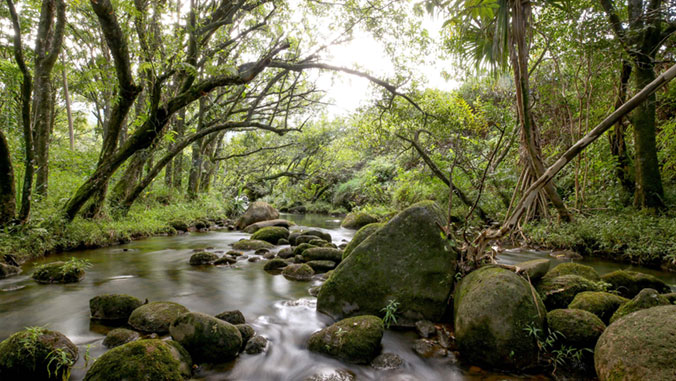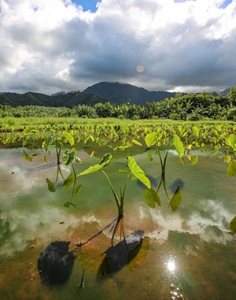
Opportunities and solutions for the nation’s most critical water issues are proposed in a published report co-authored by two University of Hawaiʻi Sea Grant College Program (Hawaiʻi Sea Grant) experts.
The report, “Water Resources Research Act Program—Current Status, Development Opportunities, and Priorities for 2020–30,” is the first vision document for the Water Resources Research Act (WRRA) Program in its 50-year history. It focuses on seven critical challenges: water scarcity and availability; water-related hazards and climate variability; water quality; water policy, planning and socioeconomics; ecosystem and drainage basin functions; water technology and innovation; and workforce development and water literacy.
The vision document was initiated in 2018 at the request of the United States Geological Survey (USGS) to guide its WRRA Program and its 54 university-based state institutes and centers for the next 10 years.

The co-authors of the report, Darren T. Lerner and Mary J. Donohue, engaged the USGS WRRA Program federal coordinator, Earl Greene, all 54 state institutes, and an ad hoc vision committee to articulate the current and future trajectory of the program to maximize its service to our nation.
Lerner, director of Hawaiʻi Sea Grant, university consortium director of the Pacific Islands Climate Adaptation Science Center, and past interim director of UH Mānoa’s Water Resources Research Center, noted “It is truly a privilege to have had the opportunity to work with all of the WRRA program directors and many of their staff to develop this critical synthesis and pathway forward for the amazing work of these university-based programs in service to communities across the entire U.S.”
Donohue, who serves as Hawaiʻi Sea Grant’s program development and national partnership specialist, said “Each of us has, or will soon, be touched by water issues resulting from climate change and other pressures. We urgently need the innovative research conducted by the WRRA Program and the next generation of water professionals it trains to see us through the coming years.”
The USGS WRRA Program delivers university-based research, outreach and education services to citizens in each of the 50 states, the District of Columbia, and the territories of Guam and the Northern Mariana Islands, American Samoa, Puerto Rico and the U.S. Virgin Islands. For more than 50 years, the WRRA Program has invested in local, state and regionally focused water-related research, information and technology transfer, and workforce development through student training and professional internships.
Thomas Giambelluca, director of the UH Water Resources Research Center, stated “The WRRA Program is critically important to the nation in providing guidance and financial support for research, outreach and education to address pressing water problems. Hawaiʻi and other island jurisdictions benefit greatly from WRRA-supported work to identify and reduce the impacts of climate change, population growth, species invasion and other threats to water supply.”
This effort is an example of UH Mānoa’s goal of Building a Sustainable and Resilient Campus Environment: Within the Global Sustainability and Climate Resilience Movement (PDF) and Excellence in Research: Advancing the Research and Creative Work Enterprise (PDF), two of four goals identified in the 2015–25 Strategic Plan (PDF), updated in December 2020.
–By Cindy Knapman

